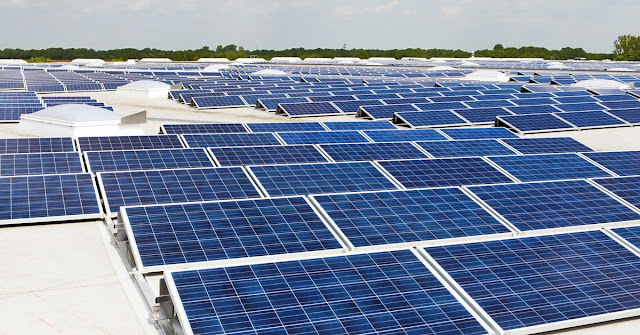How to start a 1 MW solar power plant ?
- Get link
- Other Apps
By
Renewconnect
-
Starting a 1 MW solar power plant involves multiple steps across technical, financial, legal, and human resource aspects. Here’s a step-by-step process to guide you:
1. Feasibility Study and Site Selection
- Conduct a feasibility study: Analyze the solar potential of different locations by assessing solar radiation, weather conditions, and shading. Tools like PVsyst and RETScreen can help in solar resource assessment.
- Site selection: Identify an area with sufficient land (typically, a 1 MW plant requires about 4-5 acres depending on technology and efficiency).
- Land acquisition: Ensure the land is suitable and legally available for solar power installation. The land should ideally have good access to grid infrastructure.
2. Technical Aspects
- Choose the technology: Decide on the type of solar panels (monocrystalline, polycrystalline, or thin-film) and inverters (string or central).
- Design the plant: Develop the system design, including panel arrangement, wiring, and inverters. Key technical considerations include:
- Optimal tilt angle for maximum energy output.
- Wiring and cabling for efficiency.
- Inverter sizing and placement.
- Battery storage (optional).
- Grid connectivity: Apply for grid connectivity with your local power distribution company (DISCOM). This process involves technical feasibility studies to assess the grid’s ability to absorb the generated power.
- Environmental impact assessment: Depending on the region, you might need an environmental assessment to ensure compliance with regulatory requirements.
3. Financial Planning
- Cost estimation: Estimate the costs, including land, solar panels, inverters, civil work, installation, and labor. Typical cost components:
- Solar panels: 50-60% of the project cost.
- Inverters: 10-15% of the project cost.
- Balance of systems (BoS): Cabling, wiring, mounting structures, etc.
- Labor and installation: Skilled workers for installation and testing.
- Capital raising: Determine the sources of funding (equity, loans, or government subsidies). Solar plants often rely on project financing or power purchase agreements (PPAs) with off-takers.
- Government incentives: Explore financial benefits such as feed-in tariffs (FiT), tax incentives, accelerated depreciation, or subsidies under national solar programs (such as PM-KUSUM in India).
4. Legal and Regulatory Approvals
- Obtain necessary permits: Key approvals and licenses required include:
- Land use clearance: Based on whether the land is agricultural, industrial, or residential.
- Environmental clearance: In case the project exceeds certain capacity limits.
- Grid connectivity permit: From the local transmission utility.
- Power Purchase Agreement (PPA): Negotiate and sign a PPA with the buyer (state DISCOM or private off-taker).
- Building and safety permits: Approval from the local administration regarding the civil construction work.
- Renewable energy certificates (RECs): Consider participating in the REC market, which provides additional revenue streams.
5. Human Resources and Project Management
- Engineering, Procurement, and Construction (EPC): Hire a reliable EPC contractor responsible for the overall project execution. The contractor should manage:
- Solar plant design and layout.
- Civil and structural work.
- Installation and commissioning of solar panels and inverters.
- Operation & Maintenance (O&M): Plan for ongoing maintenance, including periodic cleaning of panels, performance monitoring, and inverter checks.
- Hiring and training: Ensure the team includes:
- Project managers to oversee execution.
- Engineers and technicians for installation and O&M.
- Legal advisors for contracts and regulatory compliance.
- Financial advisors for budgeting, costing, and returns analysis.
- Skilled labor for solar panel installation and wiring.
6. Plant Construction and Installation
- Procurement of equipment: Procure solar panels, inverters, mounting structures, cabling, and transformers from trusted manufacturers.
- Civil works: Complete civil works including land leveling, mounting structure erection, and fencing.
- Electrical installation: Install inverters, transformers, and wiring to connect the panels to the grid.
- Testing and commissioning: After installation, conduct thorough testing to ensure the system is working as expected and connected properly to the grid.
7. Power Plant Operation and Monitoring
- Remote monitoring systems: Install software and hardware systems for real-time monitoring of plant performance (generation, outages, etc.).
- Performance Ratio (PR) optimization: Continuously optimize the plant for maximum efficiency (typically aiming for 75-85% PR).
- Maintenance: Regularly clean panels, monitor inverter health, and manage other plant infrastructure for uninterrupted operation.
8. Power Sale and Revenue Generation
- Sell power to the grid: Under a PPA agreement or participate in net metering programs.
- Renewable Energy Certificates (RECs): Register for RECs if applicable.
- Monitor financial returns: Ensure proper invoicing and payment systems for electricity sold, keeping track of project ROI and payback periods.
Key Financial Metrics to Consider
- Return on Investment (ROI): Expected revenue from power generation vs. initial and ongoing costs.
- Payback period: Typically 6-8 years depending on subsidies, energy tariffs, and operating costs.
- Levelized Cost of Electricity (LCOE): The net present cost of the plant over its lifetime divided by the energy produced.
This structured approach provides a comprehensive framework for successfully starting a 1 MW solar power plant.
- Get link
- Other Apps





